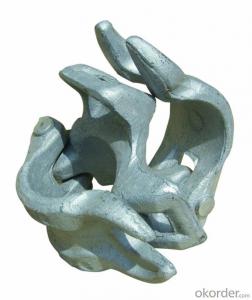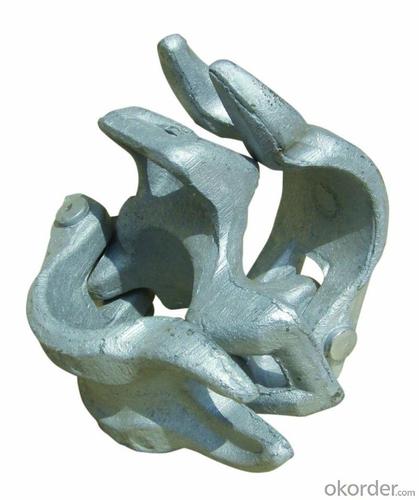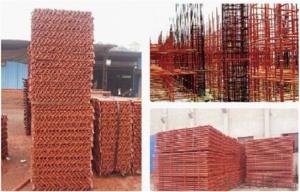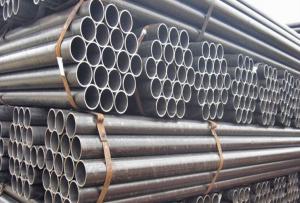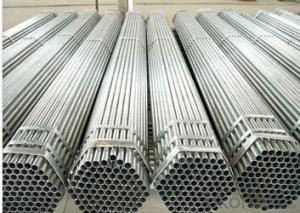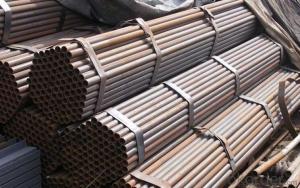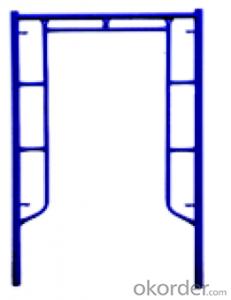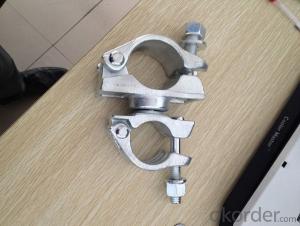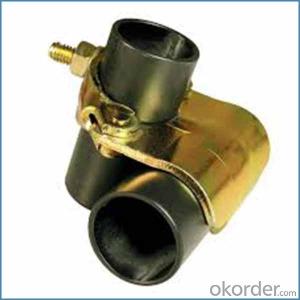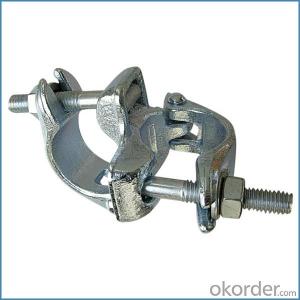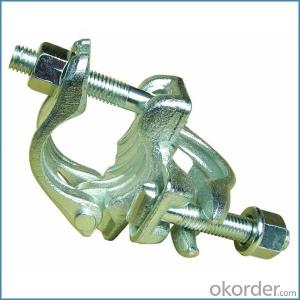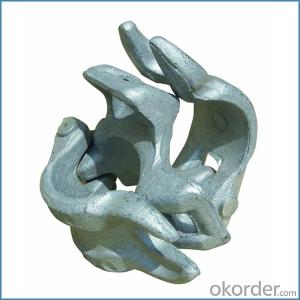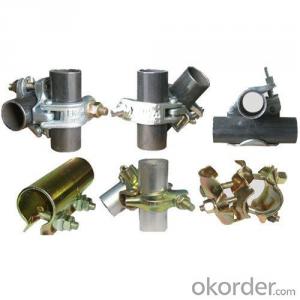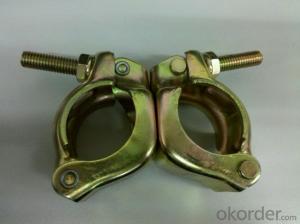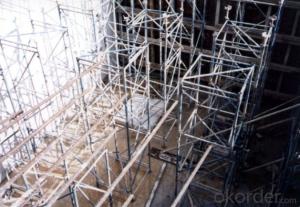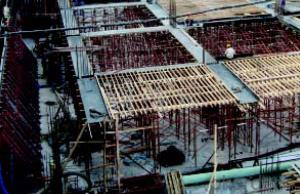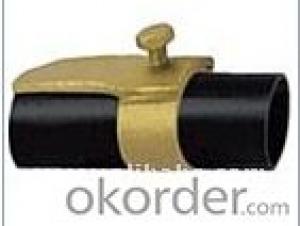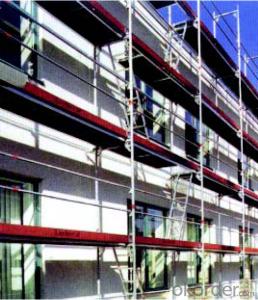En74 Scaffolding Clamp british German Forged Type
- Loading Port:
- Tianjin
- Payment Terms:
- TT OR LC
- Min Order Qty:
- 1000 kg
- Supply Capability:
- 100000 kg/month
OKorder Service Pledge
OKorder Financial Service
You Might Also Like
En74 Scaffolding Clamp british German Forged Type
Description
1.The scaffolding coupler is always used to connect the steel pipe as scaffolding system.
2.The often used coupler is swivel coupler and righ angle coupler .
3.We can provide types of scaffolding coupler according to your requirement.
4.Couoler can fix the 48.3mm scaffolding steel pipe tightly and make the whole scaffolding system more steadily.
Feature
(1)Excellent Anti-Breaking—Cold Pressed Steel
(2)Outstanding Resistance Deformation
(3)Strong Anti-Dropping Ability
Photo

Parameter
| Material | Q235,345steel |
| Size | 48.3mm*48.3mm |
| Surface finish | Galvanized |
| Weight | 1.1kg around |
| Standard | BS1139,EN74 |
| Package | 25pcs/bag,steel pallet |
| Manufacture | As per customer requirement |
| Market | Africa, South America, the Middle East and Asia |
FAQ
Q: Are you a factory or trading company?
We are a state-owned corporation in China,dealing with various kinds of building materials.We have our holding subsidiaries.
Q: Where is your factory located? How can I visit there?
Our factory is located all around China.
Q: Can I get some samples?
Sample is free, customer only pay freight for the first time.
Q: Delivery?
10-30days. (5-15 containers)
Any question,feel free to contact us.
- Q: So hi. Im 14 and i want to get my scaffold done . Dose it really hurt?And dose gettin your belly button hurtt to?I just really want to know about the scaffold ?
- What body part are you speaking about? A scaffold is a temporary platform, either supported from below or suspended from above, on which workers sit or stand when performing tasks at heights above the ground. Aside from that, your belly button and any other part of your body that is done (I presume you mean pierced) would cause pain.
- Q: Two window washers, Bob and Joe, are on a 3.00 m long, 310 N scaffold supported by two cables attached to its ends. Bob weighs 890 N and stands 1.00 m from the left end, as shown in the figure below. Two meters from the left end is the 500 N washing equipment. Joe is 0.500 m from the right end and weighs 990 N. Given that the scaffold is in rotational and translational equilibrium, what are the forces on each cable?Left cable?____kNRight cable?____kN
- Bob And Joe
- Q: Are steel tube couplers compatible with scaffolding projects involving temporary shelters or enclosures?
- Yes, steel tube couplers are compatible with scaffolding projects involving temporary shelters or enclosures. Steel tube couplers provide a reliable and secure connection between scaffolding tubes, allowing for the construction of stable and durable structures. They are commonly used in scaffolding projects to create temporary shelters or enclosures for various purposes, such as protection from weather elements or creating enclosed workspaces.
- Q: How do steel tube couplers ensure the safety and stability of scaffolding platforms or work areas?
- Steel tube couplers ensure the safety and stability of scaffolding platforms or work areas by providing a secure connection between the tubes. These couplers are designed to grip the tubes tightly, preventing any movement or slippage. This ensures that the scaffolding structure remains sturdy and stable, reducing the risks of accidents or collapse. Additionally, the use of steel tube couplers allows for easy adjustment and reconfiguration of the scaffolding system, providing flexibility while maintaining a high level of safety.
- Q: How do steel tube couplers contribute to the overall stability of a scaffolding system?
- Steel tube couplers play a crucial role in enhancing the overall stability of a scaffolding system. These couplers are specifically designed to connect steel tubes together, ensuring a strong and secure framework. One of the key contributions of steel tube couplers is their ability to provide a rigid connection between the tubes, creating a solid structure. By securely fastening the tubes together, the couplers prevent any movement or rotation, thereby maintaining the stability of the scaffolding system. This is particularly vital in ensuring the safety of workers who rely on the scaffolding for support while undertaking various tasks at elevated heights. Additionally, steel tube couplers also enable the scaffolding system to withstand heavy loads and forces. The couplers distribute the weight evenly across the connected tubes, preventing any concentration of stress or strain on a single point. This distributed load capacity enhances the overall stability of the scaffolding system, ensuring its ability to withstand the demands of different construction and maintenance activities. Moreover, steel tube couplers contribute to the adaptability and versatility of scaffolding systems. With various types of couplers available, such as swivel, right-angle, and sleeve couplers, different configurations and angles can be achieved, allowing for the creation of complex scaffolding structures. This adaptability ensures that scaffolding systems can be customized to suit specific construction requirements, further enhancing their overall stability. In summary, steel tube couplers significantly contribute to the overall stability of a scaffolding system by providing a rigid connection between tubes, distributing loads evenly, and allowing for adaptability. These couplers play a vital role in ensuring the safety and reliability of scaffolding structures, making them an essential component of any construction or maintenance project.
- Q: How do steel tube couplers accommodate different angles or connections in scaffolding systems with complex geometries?
- Steel tube couplers are an essential component in scaffolding systems with complex geometries as they allow for the accommodation of different angles and connections. These couplers are specifically designed to provide a secure and reliable connection between two steel tubes, enabling the creation of various configurations to meet the specific requirements of the scaffold structure. One of the key features of steel tube couplers is their ability to adjust to different angles. This is achieved through their flexible design, which allows for angular rotation and movement. The couplers typically consist of two halves connected by a bolt or nut mechanism, enabling them to be tightened or loosened as needed. This adjustability allows the couplers to accommodate varying angles between tubes, ensuring a firm and stable connection regardless of the scaffold's complex geometry. Moreover, steel tube couplers also enable the connection of tubes in various configurations, such as parallel, perpendicular, or diagonal arrangements. This versatility is crucial in scaffolding systems with complex geometries, where multiple tubes need to be interconnected to create a stable structure. The couplers provide a quick and simple means of connecting tubes at the desired angles, ensuring that the scaffold can be assembled and disassembled efficiently. In addition to accommodating different angles and connections, steel tube couplers also offer the advantage of high load-bearing capacity. These couplers are specifically designed to withstand heavy loads and provide a secure connection between steel tubes, ensuring the safety and stability of the scaffold structure. This robust construction allows scaffolding systems with complex geometries to support workers, equipment, and materials at various heights and in different configurations. Overall, steel tube couplers play a crucial role in accommodating different angles and connections in scaffolding systems with complex geometries. Their adjustable design, versatile connection capabilities, and high load-bearing capacity make them an indispensable component for ensuring the stability, safety, and functionality of scaffolding structures in various construction projects.
- Q: How do steel tube couplers ensure a secure connection without damaging the tubes?
- Steel tube couplers ensure a secure connection without damaging the tubes by using a mechanical grip or friction-based connection method. These couplers have internal ridges or teeth that grip onto the tubes when tightened, creating a strong bond. This grip allows for the transfer of loads and forces between the connected tubes, ensuring structural integrity. Additionally, steel tube couplers are designed to distribute the load evenly across the entire connection surface, minimizing stress concentration points and preventing damage to the tubes.
- Q: Do you have to be a certain age to get an scaffold ear piercing?
- As the previous answer said, it depends where you live to be able to get it legally done. However any professional piercer will not pierce your industrial, regardless of the law, if you're under 16. And that's just because your ears are still growing.
- Q: In the town to invest fastener steel scaffolding rental needs of how large
- The specification is to build the site configuration of the reference book, the higher authorities to check when you check the specification configuration is complete, so the specification is to buy from the bookstore, can not use the electronic version of theThe first part of the civil engineering construction national standards 1
- Q: Are there any specific instructions for tightening steel tube couplers in scaffolding?
- Yes, there are specific instructions for tightening steel tube couplers in scaffolding. It is important to follow the manufacturer's guidelines and recommendations for proper tightening techniques. Generally, the couplers should be tightened using a scaffold wrench or spanner, making sure to achieve a secure and stable connection. Over-tightening should be avoided to prevent damage to the couplers or distortion of the scaffold structure. Regular inspections should also be conducted to ensure the tightness of the couplers is maintained.
Send your message to us
En74 Scaffolding Clamp british German Forged Type
- Loading Port:
- Tianjin
- Payment Terms:
- TT OR LC
- Min Order Qty:
- 1000 kg
- Supply Capability:
- 100000 kg/month
OKorder Service Pledge
OKorder Financial Service
Similar products
Hot products
Hot Searches
Related keywords
